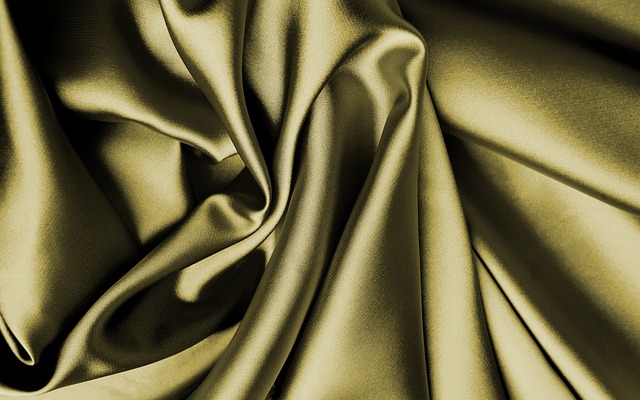Fibre to Fabric (Part 2)

- Have you heard of the term ‘ Fibre to fabric’ before I guess you must have.
- What comes first to your mind when you hear about it may be a process of some kind of conversion yes it is,
- The process of converting Fibres which we can obtain from both plants as well as animals to fabrics ( a clothing material).
- The fibres which we obtain from animals usually are wool which we obtain from sheep, yak etc while the other one is silk which we obtain from silkworm and many more.
There are various methods through which these thin fibres are converted to fabrics like –
- Knitting
- Weaving
We will learn about these processes in more detailed form.
- One of the important natural fibre that we obtain from animals is’ wool’.
- The animals from which we extract wool are sheep, goat, yak and several others.
- Wool is grown on their bodies just the same way human grows hair
- Sheep usually grows two type of hair on their bodies
- First, one is the beard hair
- While other is the hair which are very thin which usually covers the skin.
- The wool is basically obtained from these hair.
- The sheeps which have thin and soft hair are usually used for wool
- To obtain these parents of these sheeps are chosen who can give birth to the sheep with fine and soft hair.
- This process of specifically selecting the sheeps is called as ‘ selective breeding’.
Contents
Animals that yields wool
- There are different types of sheeps found in different parts of the world.
- But sheeps are not the only animal through which we obtain wool.
- There are several other kinds of animals which give us wool.
- The wool which we usually get in the market for knitting purposes is sheep wool.
- Wools are also obtained from goats.
- They are very fine and soft wool.
- They are specifically used for making ‘Pashmina shawls’.
- Another animal used for extracting wool is ‘camel’.
- Camels like alpaca and llama are used for obtaining wool
- They are usually found in the areas of South America.
Fibre to wool
- Let us learn about the process of obtaining wool from sheep.
The first process is:-
Rearing and Breeding
- In hilly areas like Himachal pradesh, Uttaranchal, Sikkim and plain areas like Punjab, Haryana , Gujarat and many more areas
- The shepherds takes their herd of sheeps for grazing of food
- Sheeps are herbivores animals so they usually survive on grass, leaves and plants for food.
- Beside what they eat while grazing they are also given pulses, grains and mineral rich food
- In winters, they are usually given fodders, pulses etc.
- This process of feeding sheeps is called as rearing.
Different breeds of sheeps are reared in India for the purpose of wool they are:-
- Lohi
- Rampur
- Bushair
- Nali etc
- Some sheeps have thick layers of hair which gives out great quality wool.
- The best quality of breed for wool are chosen with the process of ‘ selective breeding’
- Suppose, a breed of sheep which has a thick layer of hair is chosen for the purpose and then it’s breeding is done with other sheep to give birth to sheep which also have thick hair.
- One parent is specifically chosen of good breed.
- Once the hair grows well they are shaved with the help of razor.
Processing of fibres to wool
The first step in the process of converting fibre to wool is;-
- Firstly, the thin layer of fine and soft hair from the body of the sheep are removed; this process of removal is referred to as ‘ Shearing’.
- This is usually done with the help of a razor same as used by the barbers for cutting or removal of hair.
- This is a painless procedure
- Hair of sheep are mainly removed during hot weather
- Because in hot weather it is easy for the sheep to survive without the layer of hair.
- The hair of sheep regrows in the same way human hair grows.
Second step
- The hair which are removed from the body of the sheep are then thoroughly washed this process of washing is called as ‘Scouring’
- This is done to remove the dirt and dust present in them.
- Earlier, this process was done with the help of hands.
- But nowadays, this is done with the help of machinery to save time and labour.
Third Step
- After, the process of washing the hairs they are sent to the factory
- In the factory the wool different hairs of different textures are sorted and separated this process is called ‘ Sorting’.
Fourth Step
- From the hair small soft fibres are separated these fibre are referred to as burr.
- They usually remain on our woolen clothes.
- These fibres are then again washed and dried
- After the drying process the fibres get ready to get converted into wool.
Fifth Step
- Then, after drying the fibres which are obtained are dyed into different colours like pink, blue,green and the colour you must be thinking now.
- Because usually the fibres which are obtained from the sheep are of black, brown, and white just as the human hair colour types.
Sixth Step
- The fibres are then turned into a shape of ball called yarn after straightened and combed.
- The fibres which are longer in length are then converted into wools for sweaters because making of sweaters require more wool
- And the wools which are short in length are used for making woolen clothes
Process of making wool from fibre
- Removal of hair from sheep’s body called
- Washing of hair obtained called as scouring
- Separation of hair with different texture called as sorting
- Fluffy and soft hair are separated called as burrs
- The fibres are dyed into different colours
- Converted into small balls of wool called yarn.
Silk
- Silk is another fibre which we obtain from animals after wool.
- Silk is obtained from an animal called silkworm and this process of obtaining silk from silkworm is called sericulture.
Silk worm
- Silkworm is the animal from which from we obtain silk
- Female silk moth lays eggs then these eggs are hatched they are called caterpillars or silkworms.
- Then they grow large and the next step is they become pupa.
- They make a net and do head movements when they do different head movements they secrete a fibre which are made up of protein.
- When this fibre is exposed to the air they become silk.
- In the next developing stage caterpillar of silkworm wholly cover itself with silk and becomes cocoon
- The further development takes place inside the cocoon.
- The silk obtained from silkworm is used for making silk clothes.
- There are variety of silk moths found which gives out different variety of silks
Some of the examples of silk are:-
- Mulberry silk
- Eri silk
- Tasar silk
- Musar silk
Cocoon to silk
- Now , we will learn about the process of obtaining silk in a more detailed form.
- First, female silk moths lay eggs and usually lay hundreds of eggs at a time.
- These are carefully sold to farmers who extract silk or silkworm farmers.
- Farmers keep these eggs safely and in suitable temperature and wait for them to hatch.
- Then these eggs hatch into caterpillar
- This process of hatching usually takes place when new leaves on mulberry tree grows
Now, you must be wondering what is the connection of mulberry tree with caterpillars
- This is because these caterpillars eat these mulberry leaves day and night and become large in size.
- Exactly after 25 to 30 days the caterpillars stopped eating and began to become cocoons .
- Inside the cocoon they spin the cocoons and silk fibre is produced
Processing of silk fibre
- A stack of cocoons is used for obtaining silk.
- The silk fibre are extracted from the cocoons by the process of drying
- They are dried under the sun or exposed to streams.
- The process of extracting silk from cocoon is called rearing of silk
- This is done using various machines
- Then, the silk fibre is converted into silk threads
- Which are then used for making silk cloths
In this chapter we have learnt about various procedures of obtaining fibre from animals.






Responses